Transboundary Management
Mara River Basin
|
NEW ESRI StoryMaps: What's On Our Shelves & NWNL Song Library & No Water No Life ESRI |
Mara River Basin
Joseph K Terer
Nile Basin Initiative, Project Manager of Mara River Transboundary Integrated Water Resources Management Program
Alison M Jones
NWNL Director & Photographer
Alison Fast
Expedition Videographer
Introductory Notes
Transboundary Basin Management
The Value of Wetlands
Threats to Face: An Overview
Drought and Loss of Tourism
Drought and Loss of Cattle & Forest
Drought Mitigation
Droughts Demand Dams
Small Hydro-dams
Collaborative Stewardship
Transboundary Stewardship: The NBI
All images © Alison M. Jones. All rights reserved.
The Nile Basin Initiative (NBI) is an inter-governmental partnership of 10 Nile Basin countries: Burundi, DR Congo, Egypt, Ethiopia, Kenya, Rwanda, The Sudan, Tanzania, and Uganda. Eritrea is an obersver. [ED: South Sudan joined in 2013.]
An all-inclusive, basin-wide institution was established on February 22, 1999, as a forum for consultation and coordination among the Basin States for the sustainable management and development of shared Nile Basin water and related resources in order to create win-win benefits.
Resources:
NWNL Hello, Joseph. It’s great to have a chance to hear your thoughts on managing the Mara River Basin from the perspective of its transboundary nature and your position with the Nile Basin Initiative [henceforth, NBI].
JOSEPH TERER As Project Manager for Mara River Transboundary Integrated Water Resources Management Program, I deal with developmental and water-resource management throughout this transboundary basin. Nile Equatorial Lakes Subsidiary Action Program [NELSAP] implemented this project within the NBI.
Kenya and Tanzania share the Mara River Basin, which covers about 10,325 square kilometers [3986.5 square miles]. The river begins in western Kenya’s Mau Forest. It finally drains into Lake Victoria in western Tanzania. The Mara River runs about 400 kilometers [248.5 miles] through six administrative districts in Kenya and four in Tanzania.
NWNL How did the Integrated Water Resources Management Program begin?
JOSEPH TERER We started preparing for it in 2006, when there was no cooperative management of the Nile Basin. Each country was managing its own national use of the basin, its own laws, its own institutions and its own policies.
The NBI came together to establish a sustainable and cooperative framework for water-resource management in the Nile watershed sub-basins including, the Mara River Basin. Our goal is to enable management of investment programs in this basin.
This project gathered river basin rainfall amounts, soil type, existing vegetation, river flows…. We came up with a model offering investment scenarios and projects that could be implemented in this basin. Once implemented, these projects could address the socio-economics of the river basin; reduce poverty; and introduce environmental solutions.
This is a transboundary effort between Kenya and Tanzania. My task is to initiate and harmonize these policies to ensure the institutions operate at the same level.
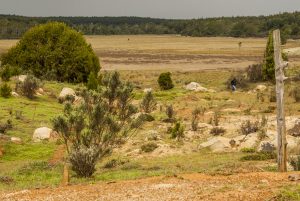
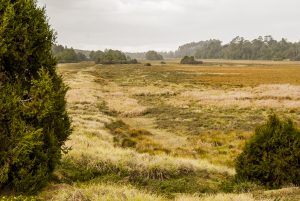
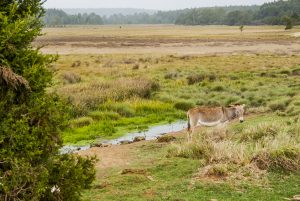
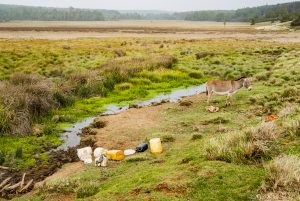

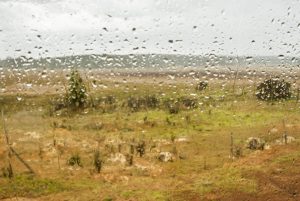
Enyapuiyapui Swamp, Kenya: Source of the Mara River
NWNL Let’s start by looking at the value of Mara River Basin wetlands.
JOSEPH TERER There are two very, very important wetlands in the Mara. The first is the source of Mara River: the Enyapuiyapui Swamp [in Kenya’s Mau Forest] where the Mara River starts.
The second critical wetland is at the entry of Mara River into Lake Victoria: the Masurura Swamp [in Musoma, Tanzania]. This terminal wetland of the Mara River does a lot of work. It filters sediments, removes the sulfates and removes the nitrates. The river’s water meanders through marshes that cover about 62 square kilometers. With all its nutrients and sediments thus removed, the Mara River water is very clean by the time it gets to the lake, compared to when it enters the wetland.
NWNL I’ve flown over rivers covered in green algae as they enter the lake. I expected that in Musoma, but saw none. Is it the Masurura Swamp that makes this river’s water cleaner than that of other rivers entering Lake Victoria?
JOSEPH TERER Yes. Wetlands are particularly important for their filtration of water entering the lakes.
NWNL So, the Masurura wetlands prevent algae blooms, fish kills and poor water quality in the Mara River that would otherwise be caused by upstream pollutants?
JOSEPH TERER The Masurura Swamp’s wonderful filtration of the water is unique. You can see the lake itself is very clean when you go over the bridge where the Mara enters the lake. In other areas, water goes into the lake full of silt and nutrients, thereby causing fish kills in the lake and a bringing in lot of sediment. The Mara is unique because its water is very clean when it enters into Lake Victoria.
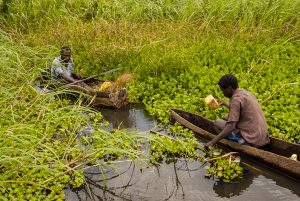
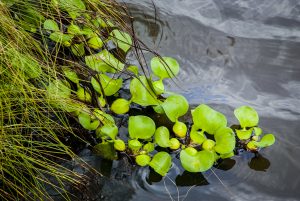
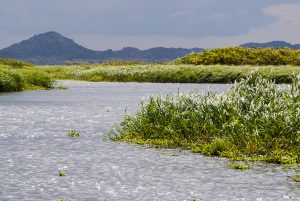
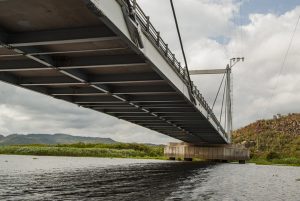
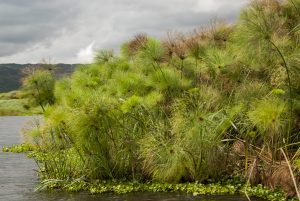
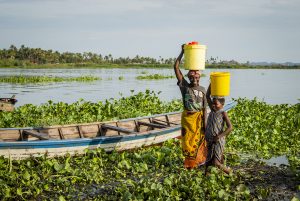
Scenes from the Masurura Swamp, Mouth of the Mara River, Tanzania
NWNL What management challenges do you face within the Mara River Basin?
JOSEPH TERER The Mara River Basin faces by a number of environmental and other resource threats. One is climate change. Basin communities can no longer predict the onset of rains. Thus planning has become a big challenge for them. Another problem is pollution. There’s a lot of sedimentation of the river due to soil erosion from farms in the upper basin. Most river towns don’t have waste-treatment facilities, so waste is dispatched into the river and thereby that increases its pollution.
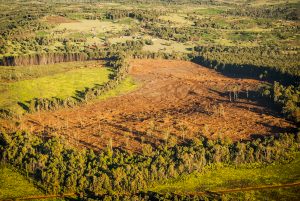
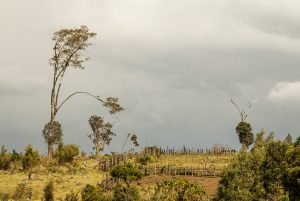
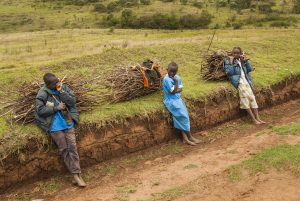
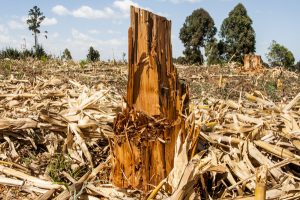
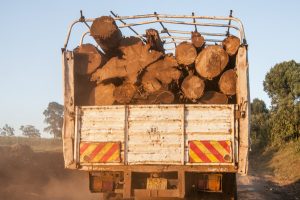
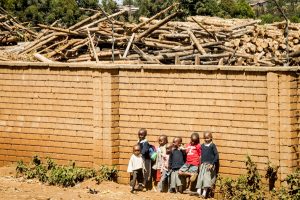
Deforestation in the Mau Forest
Another problem in Kenya and Tanzania is the destruction of vegetation. Degradation in Kenya’s Mau Forest has become very critical. The confluence area of the Mara River tributaries in that forest is severely degraded. People have encroached into the forest to illegally cut trees – without replanting them and without building terraces.
People exploit natural resources for their survival. People log timber in the forest to get building materials: timber, boards and frames. They cut wood for fencing. Replacement of these trees is very low. Normal advice is that when you cut one tree, you then plant four. But I think it’s now the other way: when they cut four trees, they plant one – or none at all. Therefore, most of the springs that feed into the Mara River have dried up and water table levels are quite low.
Another problem is the declining flow levels of the river. Recently, the flow level has been reduced to the extent that in some areas they are just about two cubic meters per second, instead of the normal rate of 11 to 17. Flows are down so much that it’s affected the basin’s ecosystem.
JOSEPH TERER cont’d You know Mara River is famous for its wildebeest migration crossing when crocodiles grab many of them. This spectacle is dying out because during the recent prolonged dry spells, there has been very little water in the Mara River. If this drought pattern continues, there will be nothing like former wildebeest migrations and Mara River crossings.
The Mara Basin is very suitable for growing wheat, a Kenyan staple. In this recent 2009 drought, farmers lost a lot of wheat. The harvest was very poor – a negative for Kenya’s economy. Maize is another staple and most of the farmers have had a very small harvest, or lost it all. As well, pastoralists, the main occupants of the basin, see their livestock threatened during droughts.
The drought at the moment has posed an increase in poverty. When the pastoralists lose twenty, thirty, forty, or a hundred of their animals, they suffer heavily. Recovery of such herds takes a very long time.
Drought creates increasing poverty in the communities. The environmental problems caused by climate change will increase threats to basin livelihoods and increasingly present negative impacts on basin ecosystems. When a pastoralist loses his animals, he loses ways to sustainably support his family. He will resort to the forest and cut trees to sell as timber and charcoal.
JOSEPH TERER cont’d You know Mara River is famous for its wildebeest migration crossing when crocodiles grab many of them. This spectacle is dying out because during the recent prolonged dry spell, there has been very little water in the Mara River. If this drought pattern continues, there will be nothing like former wildebeest migrations and Mara River crossings.
The Mara Basin is very suitable for growing wheat, a Kenyan staple. In this recent drought, farmers lost a lot of wheat. The harvest was very poor – a negative for Kenya’s economy. Maize is another staple and most of the farmers have had a very small harvest, or lost it all. As well, pastoralists, the main occupants of the basin, see their livestock threatened during droughts.
The drought at the moment has posed an increase in poverty. When the pastoralists lose twenty, thirty, forty, or a hundred of their animals, they suffer heavily. Recovery of such herds takes a very long time.
Drought creates increasing poverty in the communities. The environmental problems caused by climate change will increase threats to basin livelihoods and increasingly present negative impacts on basin ecosystems. When a pastoralist loses his animals, he loses ways to sustainably support his family. He will resort to the forest and cut trees to sell as timber and charcoal.
JOSEPH TERER cont’d Others, needing to seek new livelihoods, will mine sand along the rivers. This will continually increase the width of the river. Similarly, gathering soil from wetlands to make bricks will degrade our nutrient-rich marshes that store and filter water and provide fish and wildlife habitat.
NWNL That’s an extensive list of challenges in this world-famous and treasured watershed. What are the consequences, if ignored?
JOSEPH TERER The consequence of all these issues is going to be very serious. It could mean the loss of the Mara River. If we lose Mara River, well… no water, no life.
If there is no water, diseases will increase because people rely on the river for drinking water. There will be high medical costs. Illness will impact the national labor force. The country itself will face many expenses: getting trucks to come to treat people, to feed the people….
It’s possible to import food products, but it is very difficult to import water. Where will that water be found? Where will water come from?
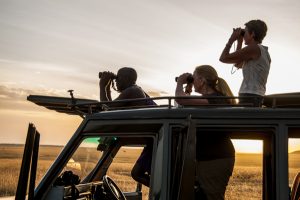
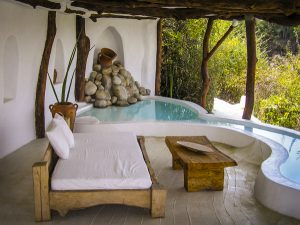
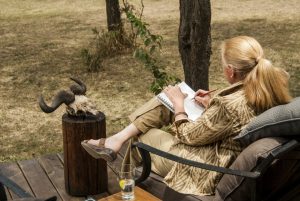
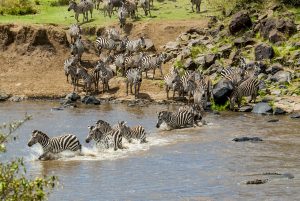
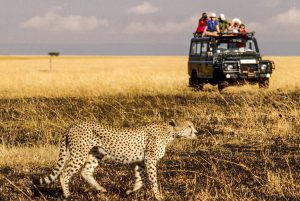
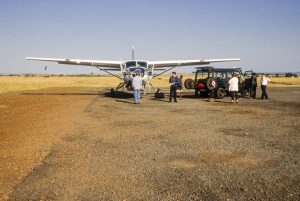
Tourism has provided a vital income.
JOSEPH TERER cont’d The consequences of increased droughts include the loss of tourism to the world-famous Mara and Serengeti ecosystems. That revenue to the countries will be lost and have a direct impact on employment. People will lose jobs in the hotels. They will lose jobs in the visitors’ tourism office. The loss of the Mara River and resulting loss of tourism cascades to each and every sector. Mismanagement of the catchment area will impact all economic sectors.
NWNL It is amazing that tourism could create such an impact.
JOSEPH TERER The droughts would drive away the wildlife in the basin. That would cause many negative impacts on both government entities and wildlife itself.
Existing records say the Masai Mara (without the Serengeti) has about a 3,500 paid-person capacity. Those tourists pay up to a $1000 for a night. If drought and mismanagement cause a loss of $1000 per night for 3,500 beds, Kenya would lose about $3,500,000 per day – just because there’s no water.
NWNL What are the consequences of drought on the future of pastoralists such as the Maasai and Wakuria?
JOSEPH TERER It is pastoralists – nomads who search for pastures and water – that mainly occupy the basin. Their men drive their animals in search of pastures leaving behind women and children with a few animals and milk.
These animals require pastures and water – or they die. When there is no water, pastoralists will even drive their animals illegally into the National Reserves and Parks. Then they encounter more danger from lion, cheetah and other predators living in these protected areas.
Once these pastoralists lose their animals, they lose their livelihood. Some lose their lives. Others need medicine. They go to forests to burn charcoal, seriously degrading the environment. It’s a vicious cycle: ecosystem degradation, loss of animals, increasing droughts…. Charcoal burning means destruction of the forest and more droughts.
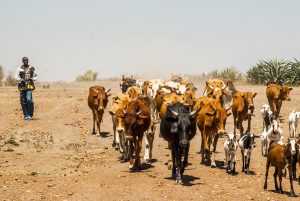
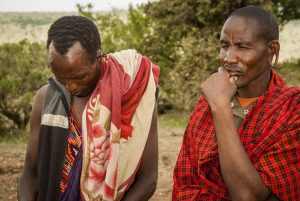
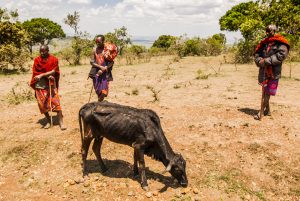
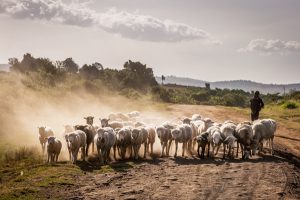
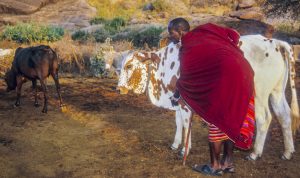
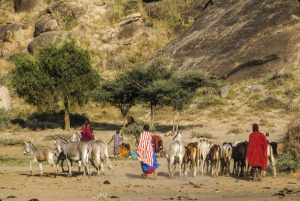
No rain, no cattle, no livelihood, no status
JOSEPH TERER cont’d Those suffering will go to urban areas for employment, which may not be available. Once a pastoralist nomad loses his animals, he loses his status in society because he’s no longer anybody if he doesn’t have any animals. That is why people take their animals into parks or urban areas – anywhere there is anything green. They have to ensure their animals survive to keep their status in the community. No animals, no status.
NWNL Does Kenya have a plan for addressing droughts and resolving deforestation?
JOSEPH TERER Regarding the Mau Forest, there’s too much talk and no action. We need action – yesterday not tomorrow. The government should swing into action now to conserve its catchment areas – the Mau and other forests – by raising saplings and motivating people to live in areas that are already settled. There is no purpose to continue talking without action.
NWNL What if no action is taken?
JOSEPH TERER No action – no money. We have to think and act locally. If action is not taken right now, the loss of the Mau and other Mara Basin forests will cause problems locally and globally. Lack of action affects livelihoods within the Mara Basin and for the fish in Lake Victoria, which flows to the Nile and into the Mediterranean Sea.
NWNL What efforts are there thus far to mitigate these threats?
JOSEPH TERER Many efforts are bringing stakeholders from hotel, tourism and farming industries together with government officials from the Ministries of Environment, Water and Agriculture. The main, main stakeholder – the community itself – sees that land is life, but land without water is nothing. You just can’t grow anything without water.
If new settlers clear the Mau Forest, all of us will suffer. Those who are in the forest should move out to engage in other activities. These people should be trained to undertake other activities and livelihoods in order to survive. Then life can continue downstream.
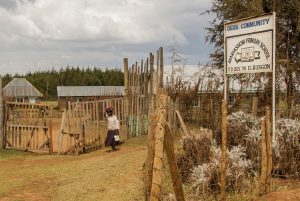
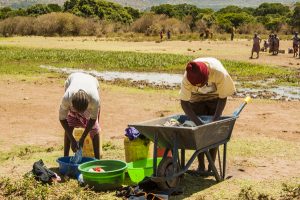
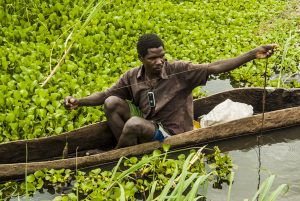
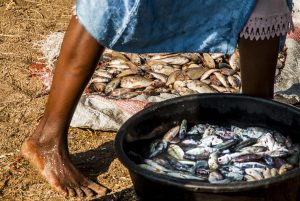
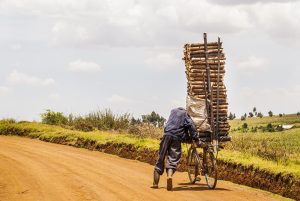
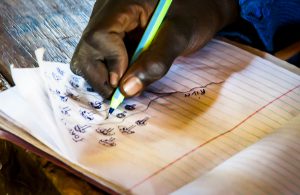
Local people are needed as resource managers.
NWNL How do you take your message to those who are cutting trees?
JOSEPH TERER Bringing together the stakeholders is a very important thing we’ve been doing. We need to sit together, brainstorm and agree on the way forward. We are now bringing the two governments [Kenya and Tanzania] together to discuss this shared resource. Their consensus will address the condition of the Mau Forest because it affects those downstream, even the fisher folks on Lake Victoria. Cooperative approaches will bring us together to manage this common resource.
The other approach is towards investments within the basin.
NWNL Will fiscal benefits differ from those of consensus building?
JOSEPH TERER If we cannot adjust socio-economic advancement among the communities, they shall continue sinking into poverty. Then there’ll be no option for these communities. In the face of this, the Mara River Basin Management Project has identified six investment areas.
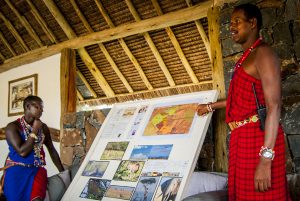
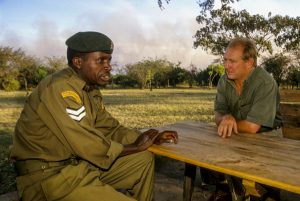
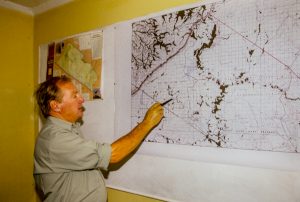
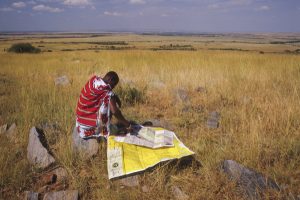
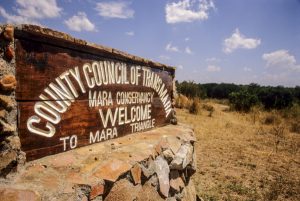
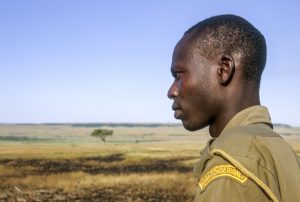
Kenya’s Mara Conservancy exemplifies successful, community-based wildlife management.
JOSEPH TERER cont’d One is to enhance tourism and wildlife management. There should be a system for communities to set aside wildlife management areas. Communities that protect wildlife will share the tourism revenue. Then they’ll see wildlife as an asset, not an inconvenience. Then they won’t encroach into wildlife habitat.
Our environmental management approach will include efforts to launch community agricultural forests. We are invested in a development program for agro-pastoralists – agricultural farmers that also keep animals. Instead of relying on the forest, they’ll grow trees in their own villages. They’ll have wood close by, making it easier to fetch firewood. They’ll make their own charcoal. They’ll get their own building material. They’ll get their own fencing material. Needed wood materials should be sourced on the farm. We are also looking into fisheries, livestock development and agricultural development. For the latter, we are looking into options of small-scale irrigation dams to be used by communities for irrigation during drought or water storage during the rainfall season. Thus, they’ll be assured of a continuous supply of water. Then they can sell crops and get income. We’re calling upon the government to encourage the purchase of packaged wood products from these farmers. Apart from having wood products for themselves, these farmed trees should also be a source of income.
One investment solution is to develop hydropower since the basin has six to seven natural waterfalls. There are two in the Mau Forest; four downstream (above Bomet near a hospital; at Mulot; and downstream near a large irrigation scheme); and one in the Serengeti. They are potential sites for creating electricity through hydropower. For example, if we bring electricity to the rural areas, people could weld windows or plowing equipment for the farm. Bringing electric power to the people is one way of trickling development into rural areas.
NWNL What is the main goal of your water-security initiatives?
JOSEPH TERER We will supply water to the communities. We will ensure that at least there will be continuous flow in the river.
At the moment, most rainfall received is lost as runoff. It can rain today, but on the following day the water table will be very low – or it can continue flowing for the next two weeks. The base flow in the rivers has continually decreased, while the flood level during rainy seasons is going up.
JOSEPH TERER cont’d The infiltration and water-storage capacity of soil is decreased by increased development that causes trampling of the ground in the catchment areas. Development means new playgrounds. Development means construction increases. Even a farmer clearing and irrigating his land reduces flow by 40 to 90% of the river’s carrying capacity. Water that should infiltrate is lost as runoff.
More livestock – less infiltration. Development poses problems in many forms. Runoff needs to be harvested for use, but not too close to the river. How will we manage for continuous flow in the downstream river basin?
NWNL Could you elaborate on the 40-90% decrease in infiltration when a forest is developed?
JOSEPH TERER In the Mau Forest, the natural filtration capacity is very high because the ground is still very porous. In a forest, water finds and feeds the root system, which itself makes the soil more porous. When you measure rainfall infiltration in a forest, 90% of the water soaks into the ground. About 10% is lost as runoff.
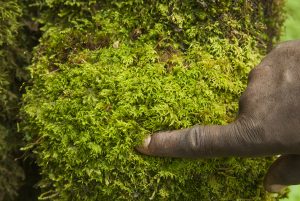
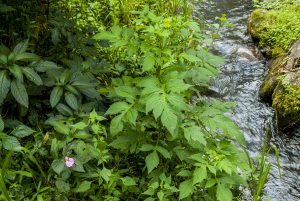
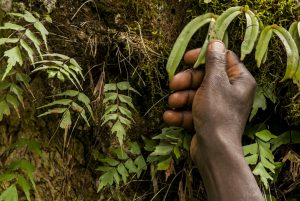
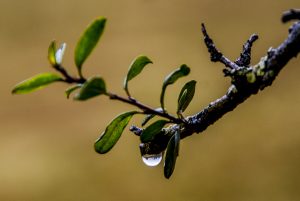
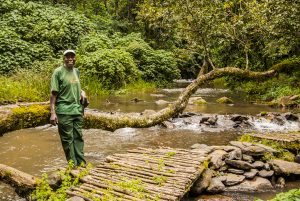
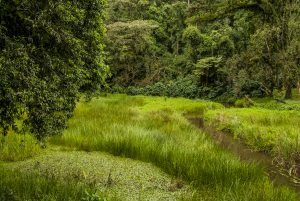
Mau Forest vegetation, roots and porous soil act as a “sponge.”
JOSEPH TERER cont’d In a cultivated area, infiltration capacity diminishes until much of the natural absorption capacity is lost. On a dirt playground, approximately 40% of the water might be infiltrated, and 60% lost as runoff. The percentage depends on the nature of the soil and steepness of the slope. The amount of filtration on cleared land depends or a variety of conditions. If the ground is flat, you force water to infiltrate, even if it has a little slope. But if the water lands on a heavily-used, steep slope, it’s quickly lost.
NWNL I understand small hydro projects for irrigation and energy can lead to an increase and diversification of income. But what are the negative impacts of such dams?
JOSEPH TERER Any development project, including hydropower, has positive and negative impacts. With hydropower, dammed water creates breeding grounds for mosquitoes that carry malaria. So, malaria is a problem in areas where dams have been constructed. And certain areas have freshwater snails that cause bilharzia.
Another negative impact is that a dam cuts off communication with the farmers on the other side of its reservoir, neighbors and maybe schools or shops. Walking across could take an added twenty minutes.
There is an Ethiopian study of dams minimizing malaria by regulating water flows. Blocking water flows downstream raises the water level so that it covers pools of water. That stabilizes the breeding of mosquitoes by filling shallow areas where mosquitoes to breed.
Without dams, we will have big problems of water availability because all water received will be lost as runoff. With dams, we can harvest water to use during the dry season. Right now the problem is no water: and… no water, no life.
We must increase the per-capita amount of water available by exploring possibilities of dams, while not necessarily constructing dams across rivers that are flowing. We can have dams in some valleys or small dams to purposely harvest rain.
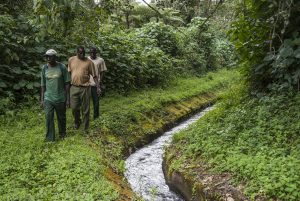
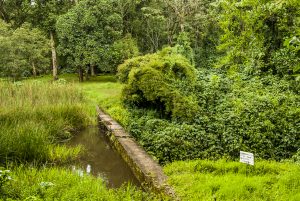
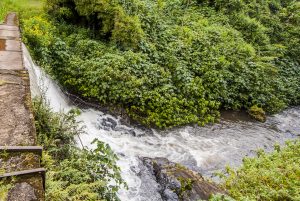
Low Dams in Mau Forest in 2009
JOSEPH TERER Here is what happens. With a waterfall, a “head” exists. [ED: A “hydraulic head” is a concept that relates the energy in an incompressible fluid to the height of an equivalent static column of that fluid.] So we are investigating areas where we can get 1, 3 or 5 megawatts – less than 6 megawatts – of hydropower.
We may only increase the head by adding 10 meters, depending on a study to be conducted. If you increase the head by another 5 to 10 meters, that will produce a small amount hydropower of about 1 megawatt, 2 megawatts, and up to 6 megawatts.
We’re not going to block the entire river. We’ll just increase the “head.” Even with a waterfall, if you confine its water into a tunnel, it passes to the turbine below and turns the turbine. By so doing, this generates power. So, this only exploits an existing head. That’s why we are targeting waterfalls – because the “head” of the river is there. There is no impact downstream. The water just passes through.
NWNL Where is the existing dam in the Mara River Basin?
JOSEPH TERER It’s about 5 kilometers upstream of Tenwek, in Bomet, Kenya, on the Nyangores River tribatary to the Mara River.
In the Mara Basin, we want to exploit existing potential for small hydrodams from 1 to 7 megawatts, not exceeding 10 megawatts. They will be completely different from the larger hydropower dams. We are not going to confine much water. It will not take even half [of the river’s flow] for the dams to fill.
After the dams are full, the water will turn the turbines and then flow downstream within a few hours. So, downstream use will not be affected at all. In contrast, large dams have direct and serious implications on downstream water users, since they can take 2 to 3 years to fill.
The head for a small dam is already there – naturally. God created our waterfalls. Since we have the water, let’s confine it, have it turn turbines to provide electricity to the people, and let it give people a limited source of income.
NWNL Thank you for differentiating the impacts of small, run-of the river dams versus those of large hydropower dams.
JOSEPH TERER In our Investment Strategy for the Mara River Basin, we’ve prioritized development of small hydropower schemes for our Infrastructure Development Program. We’re exploiting existing waterfalls to generate power at a small level of 2 to 8 megawatts. There are 6 small hydropower programs that will minimally impact communities or environment, as opposed to very large dams elsewhere in the Mara Basin and Africa.
With all our projects, we carry out an E.I.S., an Environmental Impact Study. Then we address and mitigate all issues the E.I.S. raises so our project will not invasively impact communities we are trying to serve.
NWNL How do you perceive stewardship? Is it a collaborative process?
JOSEPH TERER My passion is to assist the people in the Mara River Basin. I find poor people here, children working barefooted, children with protruding stomachs and malnourished, often because of low or poor quality water. I dream of having means to assist them, but the means is not yet there.
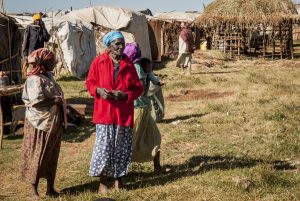
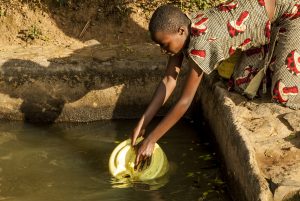
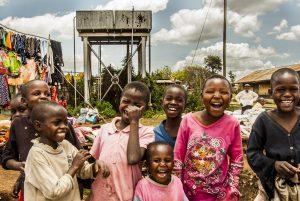
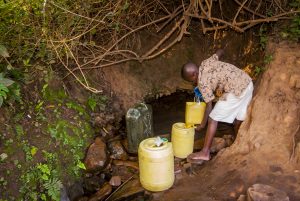
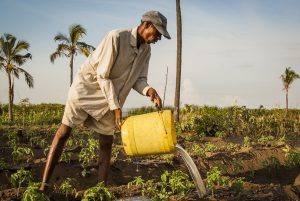
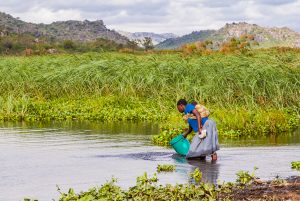
Poverty affects the future of women, children and water supplies.
JOSEPH TERER cont’d I would like is to have many stakeholders – as many as possible – come together so we solve these problems together and from all corners. Some should look at issues about women. Others should look at education. We should talk about environmental degradation. We should talk about all issues of water resources.
We need so many actors and so many organizations to come in. We have many players in business, and we will always try to get funding from international organizations.
NWNL Can you assist the poor while avoiding corruption?
JOSEPH TERER Personally, I am a realist and don’t like it when funding for the poor falls to corruption. The problem is integrity. You cannot trust a hyena with a piece of meat. My mission is to see people living their life free of poverty.
We need to address the root cause of the problem. Where you find a lot of poverty, you find environmental degradation. Where you encounter environmental degradation, investigate. You’ll find poverty is causing that degradation.
These people in the basin don’t have time. They struggle to survive. In the morning, they wake up. Their first thought is how to get the next meal. One person wakes up and thinks of where to go – to a wildlife crossing maybe. Another person doesn’t have time to go plant trees, look after them, or manage the riverbank because he’s struggling to survive. They are all thinking about where to get some money to buy food, to buy clothing.
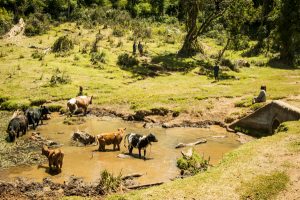
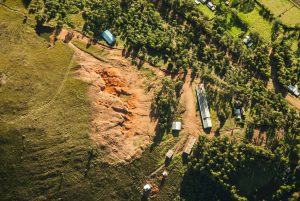
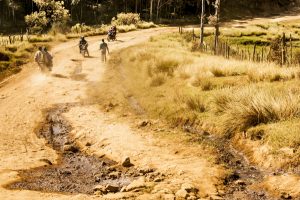
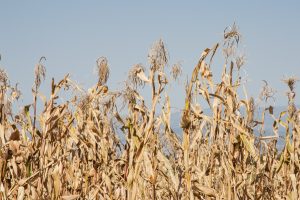
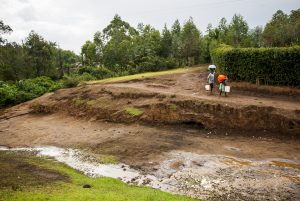
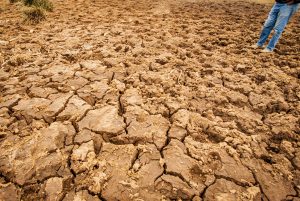
Addressing poverty addresses environmental degradation.
JOSEPH TERER cont’d Wherever you find poor people, you can’t miss the environmental degradation by people who are poor. Where there is growth and poverty is sort of reduced, you’ll find that area is more developed.
It is possible to reduce poverty. You just have to open your eyes to the people to know the kind of work they need. Bring them together. Start some minor enterprises and link them to the market. They’ll sell and they will come back to you.
NWNL Have you yourself seen minor enterprise help reduce poverty?
JOSEPH TERER I saw this when working in the government and searching for conservation land for farmers to use. I went to one farmer and said, “You should plant along side edges so there’s no wasted land. Plant some banana trees for yourself and some citrus fruits.”
He came back after a month and said, “Mr. Terer, I have 200 holes for planting banana trees, 3 feet deep with manure.” I told him, “I’ll get some banana tree for you.” After about 3 months, he told me, “I’ve planted 200 banana trees.”
I offered to go to the highway to stop people going all the way to Kisii Town for bananas and instead take them to his farm for bananas at a lower price. That farmer could not meet that demand for his bananas. He was making about $20 per day; and he has never had to come back to me.
I see that as a practical example. He found a market and then was able to build on it. His neighbors are still in “Slumber Land.” They are sleeping. But this farmer has really progressed.
It’s possible to address poverty by getting folks into an enterprise; letting them find a market; and encouraging them. If somebody guides them, they find their way out of poverty. They are then leaders in their world. It just requires commitment to take them to their destination.
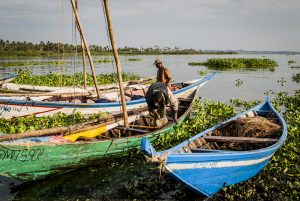
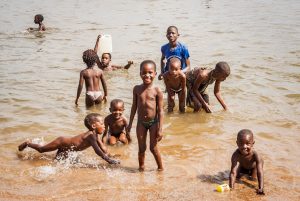
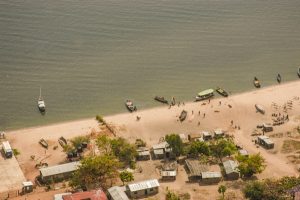
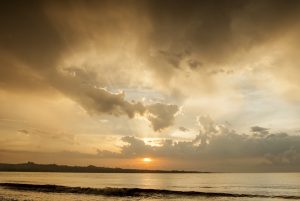
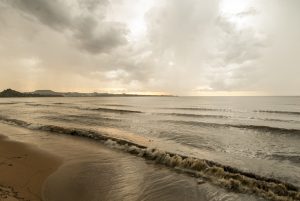
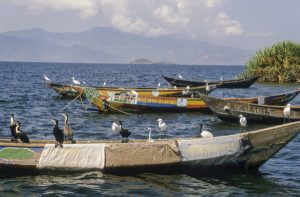
Lake Victoria, terminus of Mara River and source of White Nile River
NWNL Let’s move to a broader scope of stewardship. The Mara River flows into Lake Victoria, the source of the White Nile. Thus Kenya and Tanzania are part of the Greater Nile Basin. What does NBI do?
JOSEPH TERER The NBI formed in 1999 to make investments – most notably hydropower.
There was a recent agreement regarding a Cooperative Framework to transform the Nile Basin Initiative into a permanent Nile Basin Commission. The governments involved are very eager to have the Nile Basin Cooperative Framework Agreement signed and ultimately form the Nile Basin Commission.
Once this is agreed upon, the Nile Basin countries will benefit greatly by having their development projects funded by willing donors.
At long last, the 300 million people within the Nile Basin are facing up to their environmental challenges. Right now, peace has been achieved within the Nile Basin because the Cooperative Framework enhances regional peace building. At the moment, almost each and every part of the Nile Basin is coexisting with other states. What remains is for us to proceed and develop.
NWNL Will the Nile Basin Commission define equitable water rights, usage and sharing?
JOSEPH TERER Yes. The reason behind the formation of the NBI was to ensure equitable utilization and benefit from shared Nile Basin water resources. We are driving the formation of the Commission to ensure that all the countries will have equal utilization of the water resources so that together we develop in the same direction.
NWNL Joseph, thank you very much for sharing the NBI vision and your personal commitment to creation of a healthy Mara River Basin for the sake of all who live there.
Posted by NWNL on June 9, 2017.
Transcription edited and condensed for clarity by Alison M. Jones.
All images © Alison M. Jones. All rights reserved.
